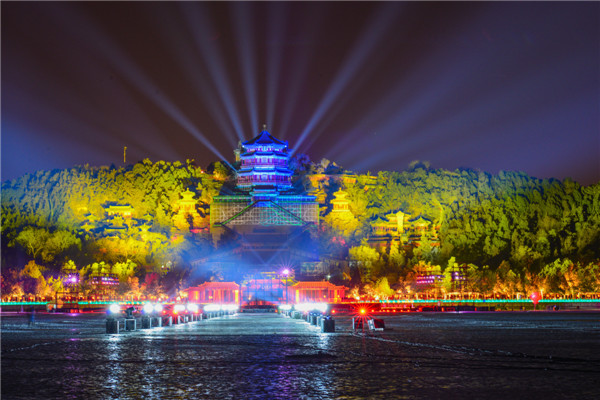
来源@视觉中国
As the symbolic structure in the Summer Palace, the Tower of Buddhist Incense was built on the mountain side during the reign of Emperor Qianlong. It is a classic work of Chinese architecture. It was a religious structure originally planned to be a nine-story tower, but ordered to be dismantled and change to a Buddhist tower for worshiping the Buddha when the eighth-story building was under construction.
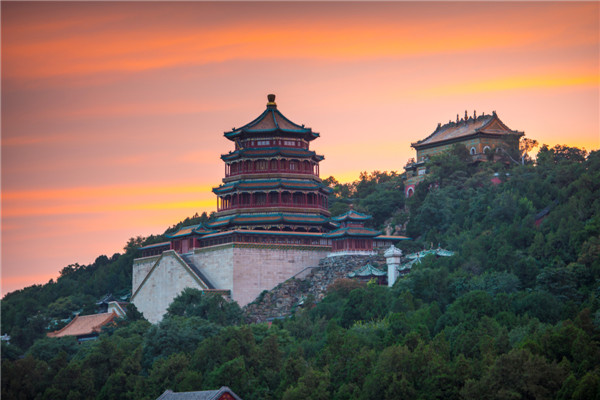
来源@视觉中国
The three-level tower is octagonal with four layers of eaves. It is 41meters (about 135 feet) high, built on a 21 meter-high (68.9-foot-high) stone foundation. It faces Kunming Lake southward, back on the Hall of the Sea of Wisdom, and is also flanked by symmetrical buildings. While climbing up a number of steep steps, visitors are offered a wider perspective of the beautiful scenery around Kunming Lake and even further.
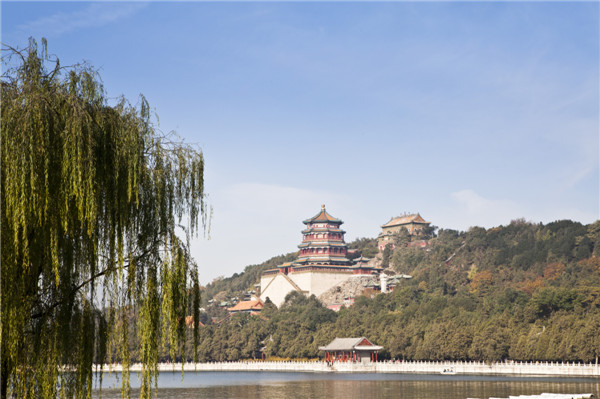
来源@视觉中国
The building was built on the mountain side 60 meters above water level. A part of the mountain was enclosed in the huge stone foundation and the tower was outstandingly held up, enjoying the attention from all over the front-hill area. The tower, the main structure of the building, faces south and is backed up by the mountain in the north. The appearance of the tower imitated the design of Yellow Crane Towerin Wuhan. It is situated on a 1.75-meter-high Buddhist pedestal made of white marble. There are porch rooms around the tower based on the huge square stone foundation. The south and the north gates are decorated with yellow glazed tiles and green brims between the yellow tiles and red walls.
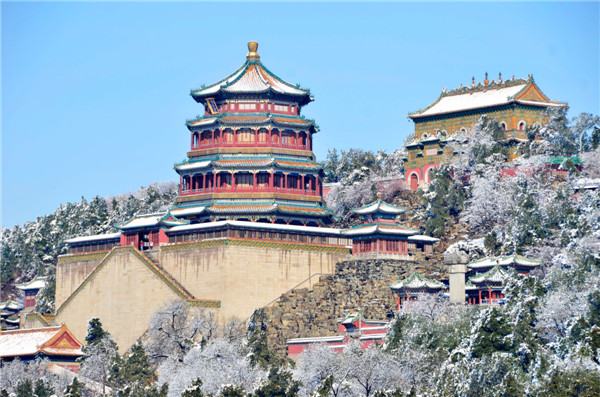
来源@视觉中国
There are eight big ironwood pillars supporting the tower. It has a plaque hanging in each level of the tower. A gilded statue of the thousand-handed Kwan-yin Buddha stands inside on the first floor, which has important historical, cultural and artistic value. According to the record, this statue, five meters high and five tons in weight, was cast in bronze and gilded with gold during the reign of Emperor Wanli of the Ming Dynasty. There is a rubbing hanging in the middle, which records the inscription written by Emperor Qianlong. The excavation process of Kunming Lake is mentioned in the rubbing.
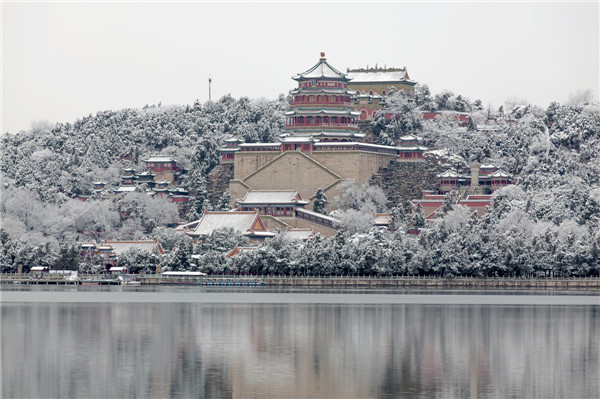
来源@视觉中国
On the north (back) of the Tower of Buddhist Incense is a colored glazed archway, called Fo Xiang Jie, literally the Realm of Popular Fragrance. It leads to the way to the building complex on the highest point of the Longevity Hill, - Hall of the Sea of Wisdom.
Source: travelchinaguide.com



